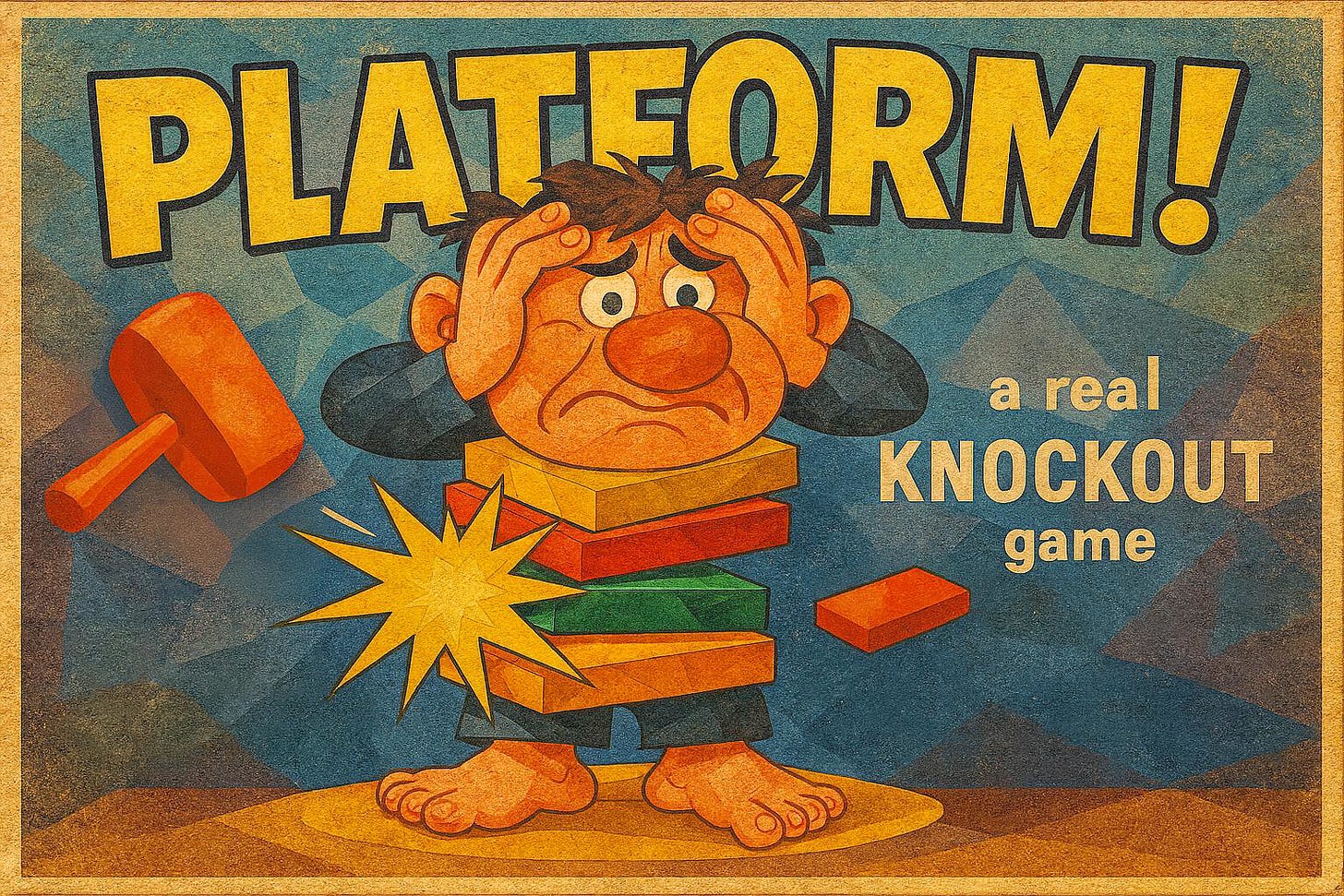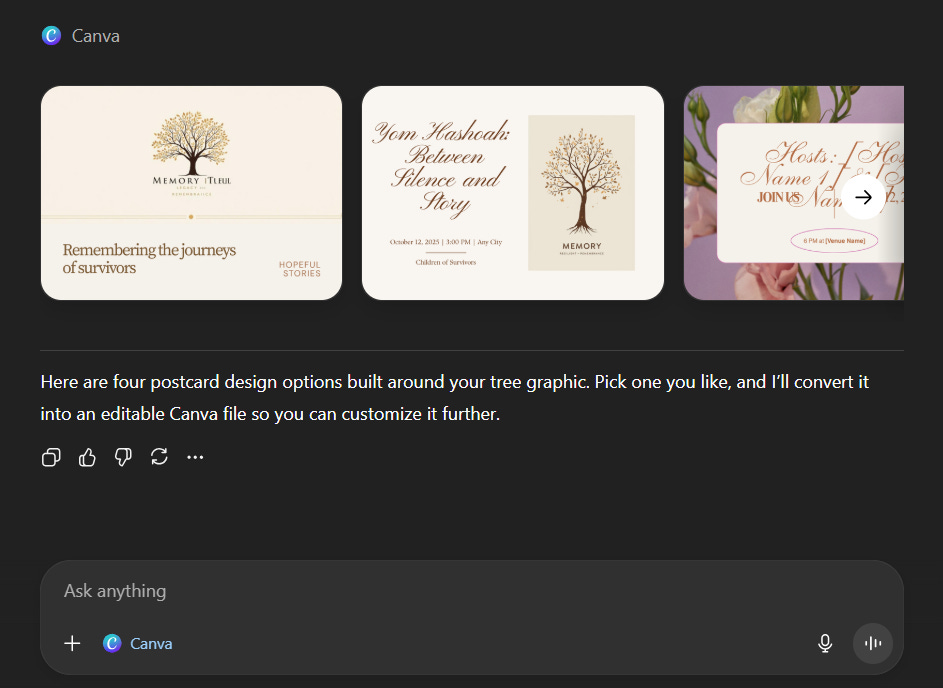So you want to be a Platform Playa
OpenAI's ambitions know no bounds - how far can it go?
Every big tech company made it by becoming a platform. Microsoft. Google. Amazon. Apple. Now OpenAI wants in — and if they succeed, the change could reverberate beyond tech to, well … everything.
A product company makes an app that does a thing. A platform company builds something others depend on. Microsoft Word helps you write. That’s nice, but when other companies build their products on top of your product — that’s when you’ve really made it. That’s when you’re a platform.
Good platforms grow fast and they grow exponentially. It’s the network effect: more users attract more developers, more developers attract more users, and the flywheel spins ever faster. Dominant platforms get so big they reshape our behavior. Each new platform layer builds on the one below, creating a taller, more powerful stack that touches more of how we work, live, and think.
IBM’s mainframes were the first computing platform. Other companies wrote software for them and built hardware around them. Then the PC came along and smashed their model. Why settle for a dumb green-screen terminal when you could run the software you wanted locally? IBM’s platform faded — and so did its power.
Microsoft Windows turned the PC1 from a pile of parts into something everyone could use. It unleashed a wave of software: WordStar for writing, Lotus 1-2-3 for spreadsheets, dBASE II for databases. Developers built more apps, users bought more PCs, and the cycle fed itself. A platform was born, and it changed work and home life alike.
The model was established, but tech was just getting started.
Next came the browser, a new layer above the OS. You didn’t need to buy software in a box anymore — just click a link. The browser war between Netscape and Internet Explorer2 was for control of this new layer.
The stack grew taller.

When I joined Microsoft in 2000, Steve Ballmer’s sweaty, frenzied “developers! Developers! DEVELOPERS!” chant summed it up. Without developers, there is no platform.
OpenAI CEO Sam Altman performed his version of Steve’s developers rant at their developers conference last week3:
The cloud was the next Platform shift. Google put the world’s knowledge a search away. Amazon built Amazon Web Services — now powering roughly a third of the internet — and made infrastructure a service4 while Microsoft again scrambled to catch up. The platform stack rose up another level.
Apple won the next round hands down by merging hardware, software, and distribution. The iPhone plus the App Store created a platform in your pocket. Platforms always mean you make more money — selling more copies of Windows for example — but Apple was the first to directly monetize third-party apps. A quarter of Apple’s revenue comes from the App Store.5
The societal impact of Apple’s success as a platform company and Android’s6 parallel play can’t be overstated. Nearly every human on planet Earth has a smartphone in their pocket, and it has changed how they live every single day.
At this point, the platform tower is getting tall. That original base layer — Windows — is still there, but it’s buried beneath everything else.
Then we got social. YouTube7 lets over three million creators reach half the planet, generating $30 billion in ad revenue. Facebook, TikTok, and others built powerful networks that now shape how we get news, connect, and even think. Substack, the platform I write this newsletter on, plays a similar game — connecting creators and audiences and skimming value from their interactions.
Other platforms built out essential layers. Payments (PayPal, Stripe) enable e-commerce. Shopify powers about a third of U.S. online stores. WordPress is a massive platform for websites8.
Society now runs across this scaffolding of tech platforms.
This takes us to the next platform shift — it’s AI — and back to OpenAI. They don’t want your attention or to sell you an app. They’re coming for your head: intelligence. They’re building a layer on top of everything else, one that provides reasoning, language, and decision-making as a service.
Last week at OpenAI’s Dev Day, they introduced a new set of third-party app integrations into their chat canvas. While brainstorming a design with ChatGPT, I was able to invoke Canva to convert that chat into a choice of mockups. Once I picked one, it created a design for me, landing me in Canva to finish it9.
Five years ago, OpenAI launched their first platform components with GPT-310. Two years ago came the ability for users and companies to create custom GPTs or chatbots including publishing them in a GPT Store. Last week, it was native integration with apps like Canva.
ChatGPT, with over 800 million weekly active users, is running an impressive platform play. They’re building like mad, and the partnerships they are making with the likes of Nvidia are raising the stakes.
Winning the platform game is never easy11. Teams has a Canva app to collaborate on design as well as a bunch of others. But even Microsoft, with all its muscle, struggled to grow a third-party app ecosystem inside Teams. Building a platform is one thing. Making it stick is another.
The platform stack has grown tall, and its impact is broad — is it stable? Who might take a hammer to it? If OpenAI succeeds and intelligence becomes a plug-in feature, how might it change the way we work and play? How might it change society? There is a ton of obvious upside, but it’s also not difficult to see where things could go badly.
Platforms have built empires. But they’ve also rewritten how we live. If intelligence itself becomes the next platform layer, the question isn’t just which company will own it — it’s what kind of society we’ll build on top.
Yes DOS came first but I’m going for an acronym free article here.
By bundling Internet Explorer with Windows — the move that crushed Netscape — Microsoft kicked off a long antitrust fight that ended with a 2001 consent decree putting limits on how it could use its monopoly power.
AI Slop: I generated this with OpenAIs new video model and app Sora. I have a couple of invites if anyone wants them — the app is only fun when you have friends to make silly videos of.
Microsoft Azure takes another 25%, Google Cloud around 10%. AWS not Amazon.com provides the majority of Amazon’s profit.
Around $10 Billion in App Store revenue last year.
Android phones are more complicated than Apple, with Google providing the core OS but the hardware provided by a variety of vendors primarily Samsung.
Google owns YouTube.
Nearly half of all websites are built on WordPress, including Wirepine ones.
I’m being generous with this flow. After a series of disclaimers from both ChatGPT and Canva, the Canva render was completely different from what I’d come up with. But you can see what OpenAI is going for: they want their canvas to be the new OS, the new browser, the new front end for all of the internet.
Web APIs (Application Programming Interfaces) and an SDK (software development kit).
For a random take on my inspiration for the title of this piece, check out the indie movie Ping Pong Playa.



Great post. I feel like even with all the huge numbers of users and their dominant / leading place in this new world of AI, OpenAI may be overreaching. My level of faith that they'll be great all the things is low right now.
Andrew, this is really great analysis—thank you for spurring my thinking.